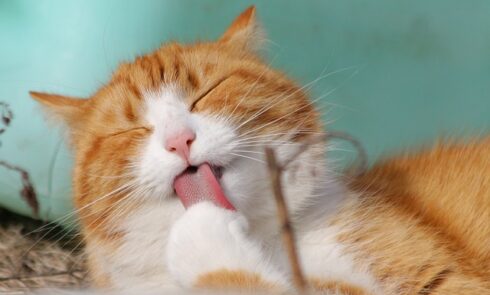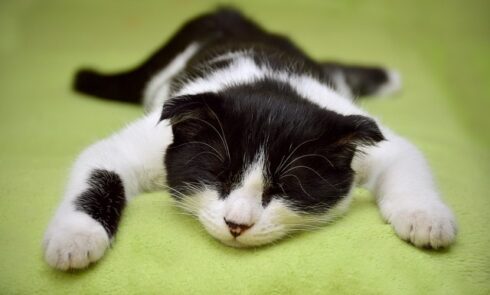Kittens, those tiny balls of fur radiating vitality and charm, are essentially the embodiment of a multitude of health indicators. Their growth patterns, robust immune responses, and dynamic digestive systems serve as steadfast markers of their enduring wellness. The dietary requirements that they have – intricately knotted into the vast tapestry of their overall well-being – shift like sands beneath an ever-changing tide as they navigate through different stages of development.
An intimate understanding is thus needed to decipher these changing nutritional needs which hold paramount importance in carving out the path towards sustained kitten wellness and protracted health. A fine equilibrium must be struck among vital nutrients such as proteins, carbohydrates, fats supplemented by vitamins and minerals. This balance is a non-negotiable component within every packet or can labeled best kitten food NZ; it acts as fuel for your feline’s speedy growth spurts while also catering to its distinct physiological demands.
The marketplaces are teeming with countless varieties of kitten food each boasting unique nutritional compositions and varying levels of quality standards. Thus stands before every kitten owner a task requiring meticulous attention – selecting food enriched with maximum nutrition tailored to suit their pet’s age bracket perfectly.
Key elements like taurine, DHA along with calcium & phosphorous make significant contributions towards enhancing eye function, stimulating brain activity while bolstering bone strength & muscle development respectively in kittens. The deliberate integration and careful selection from the gamut offered under ‘best kitten food NZ’ can tremendously influence how efficiently nutrients get absorbed within your pet’s system thereby setting them on an optimal trajectory towards overall health.
To streamline the process of understanding your kitten’s nutritional needs, here are a few key points to consider:
- The Age Factor: Kittens have different dietary requirements at each stage of their development. As they grow older, their need for certain nutrients changes. Therefore, it is essential to feed them age-appropriate food.
- Protein Intake: Proteins are building blocks that aid in muscle growth and tissue repair. Hence, kittens should be given a diet rich in high-quality proteins.
- Carbohydrates & Fats: While carbohydrates provide energy for daily activities; fats play an important role in supporting skin and coat health as well as cognitive function.
- Vitamins & Minerals: These micronutrients help boost immunity and support various physiological functions like bone health (calcium) and blood production (iron).
- Taurine Requirement: This amino acid is crucial for heart health, vision and reproduction. It cannot be synthesized by cats hence must be included in their diet through meat or commercial cat foods fortified with taurine.
- DHA Needs: Docosahexaenoic Acid (DHA), an omega-3 fatty acid primarily found in fish oil, promotes brain development during the early stages of life.
In conclusion:
Understanding your kitten’s nutritional needs can seem daunting but bear in mind that providing balanced nutrition right from the start will pave way towards lifelong wellness. Always remember to consult with a veterinarian before making any major changes to your pet’s diet so you can ensure they’re getting all the necessary nutrients while avoiding overfeeding or nutrient deficiencies.
Choosing the Right Food for Your Kitten: Wet or Dry

The quest for optimal growth and development for your kitten often engenders a puzzling question: Which brand of food is the apex choice for kittens? The marketplace is an arena, with wet and dry cat food locked in a fierce competition for supremacy, rendering the decision rather intricate for pet owners. Prioritization should be driven by nutritional composition and palatability as opposed to sheer brand reputation alone.
Moreover, the critical choice between moist or kibble form is contingent upon a slew of factors inclusive of your kittens’ age bracket, health condition, and individual tastes. It’s pivotal to bear in mind that kittens necessitate higher proportions of protein intake alongside calories plus specific vitamins and minerals. Therefore, irrespective of whether you navigate towards a wet or dry feeding regime; it becomes crucial that the chosen commodity has been specifically crafted keeping kittens in mind rather than adult felines.
Exploring Popular Brands of Kitten Food in New Zealand
In the land of kiwis, New Zealand, a plethora of brands unfurl an eclectic assortment of kitten food. They are meticulously crafted to meet and exceed the evolving needs of your furry little friend. Among this vast spectrum, few brands distinguish themselves with their superior quality, all-encompassing nutritional blueprint and pocket-friendly prices. The likes of Royal Canin, Hill’s science diet and Purina Fancy Feast have found favour among Kiwi pet parents for their distinctive recipes and specific strengths.
The conundrum often faced by kitten guardians in NZ is ‘How much should I be feeding my kitten?’ This forms an integral part of feline upbringing. Each brand typically offers a dietary chart tailored according to the age and weight parameters of the kittens. To illustrate, Royal Canin advises serving kittens aged between 4-6 months roughly around 60-80 grams per day which can be subdivided into several meal times throughout the day. Nonetheless these figures serve as mere guiding principles; it’s paramount that you keep track on your kitten’s growth pattern adjusting feed amounts where necessary keeping in view factors such as activity levels, health condition along with any distinct dietary stipulations.
Deciphering Kitten Food Labels: What to Look For
Embarking on the endeavor to secure your kitten’s peak health, decoding the data inscribed on kitten food labels can serve as an imperative commencement. These markers are laden with intricate specifics about the constituents and nutritional architecture of the chow, presenting indispensable revelations into what advantages lie within each product. Though deciding between moist or dry sustenance may be a momentous choice, there is no definitive response to “Should kittens consume dry or wet food?” since unique requirements and predilections differ from one feline youth to another.
A meticulous examination of ingredients detailed on labels forms an elementary process. Superior quality nourishment for kittens should prominently feature a discernible source of meat as its prime component, signaling it as the chief constituent in their diet. Patrons must comprehend that younger cats necessitate a more substantial protein quotient in comparison to mature felines; thus, a generous infusion of meat is immensely favorable. Equally important is steering clear from products bloated with unneeded fillers such as corn or wheat which offer minimal nutrients. Deciphering label information isn’t merely about recognizing what’s included in the meal but also apprehending why certain elements are intentionally omitted.
Adopting these practices clears up any lingering uncertainty surrounding queries like: “Should kittens eat dry or wet food?” while ensuring you’re fostering an environment conducive for raising a thriving kitten.
The Importance of Feeding Age-Appropriate Food to Your Kitten
Grasping the intricate nutritional landmarks that punctuate a kitten’s existence is paramount for their flourishing vigor and energy. The task of nurturing these petite beings towards optimal health revolves significantly around providing them with food suitable to their age. It transcends the mere act of satiating their hunger – it involves catering to their unique dietary requirements as they journey through life’s stages.
As kittens navigate each unfolding chapter of growth–from newborn innocence, through adolescent curiosity, and into adult maturity–their nutritional needs pulsate with dynamism. For example, a kitten fresh from weaning craves sustenance that bursts with amino acids, essential minerals, vitamins, and fatty acids — elements vital for fueling swift growth and bolstering immune strength. In contrast, adolescence in kittens calls for a well-balanced diet capable of matching their energetic pursuits whilst preserving an ideal body mass index. Deploying this strategy of age-specific feeding can keep pace with these critical milestones; infusing your tiny feline companion with indispensable nutrients at precisely the right moments can thus cultivate robust healthiness, apt growth progression and an ironclad immunity defense.
All About Special Dietary Requirements for Kittens
In the enigmatic journey of a kitten’s growth and development, akin to humans, peculiar dietary necessities are vital. The pivotal period in their lives when these requirements play an irreplaceable role is during the early stages. Their health, rate of maturation, even survival hinge on these specificities.
Amongst their myriad needs, protein stands as paramount. Kittens’ diet necessitates more protein than mature cats due to their swift growth trajectory. Not merely meant for augmenting growth but also instrumental in fostering robust muscles and tissues along with a resilient immune system; proteins truly have multifaceted roles.
Another intriguing component indispensable in kittens’ diets is fats serving as abundant sources of energy for your sprightly young feline friend while simultaneously facilitating absorption of fat-soluble vitamins like A,D,E,K quintessential for them. Inclusive within this category are Omega-3 and Omega-6 fatty acids which ensure proper brain development alongside maintaining healthy skin and fur.
Further punctuating the list are minerals like calcium and phosphorous demanded in precise ratios by kittens primarily aiding bone growth process. Comprehending these intricate dietary specifications can render cat owners better equipped to make well-informed decisions regarding food selection thus enhancing pet wellbeing and extending longevity.
Organic vs Non-Organic Kitten Food: Making the Choice
In the role of custodians to our beloved pet companions, we find ourselves steeped in a quagmire of choices pertaining to their dietary needs. The quandary over organic versus non-organic kitten food is indeed a perplexing one. Organic kitten chow, devoid of chemical fertilizers, pesticides or other synthetic agents offer minimal exposure to harmful substances. Furthermore, it’s brimming with high-quality constituents that bolster the overall welfare and growth stages of your young feline friend.
On the flip side, non-organic or conventional kitty fare presents an economic advantage and is often more accessible. Despite not meeting organic criteria, these foods are still bound by standards that ensure your pet’s well-being. They usually proffer a balanced mix of nutrients sourced from non-organic origins. However, there lies an undercurrent concern about potential traces of chemicals from pesticides and fertilizers used during crop cultivation in such foods. Factors such as budget constraints, product availability and predisposition towards organic merchandise influence this decision-making process.
FAQ
A kitten’s nutritional demands are multifold, mandating an equilibrium between proteins, fats, carbohydrates, vitamins and minerals. The specifics oscillate according to the breed size and general health status of the kitten.
Both moist and dehydrated foods for kittens have distinctive benefits. Wet provisions provide hydration and often prove tastier whereas dry food offers convenience while promoting dental well-being. Selecting between them is mostly reliant on your kitty’s preferences along with its specific dietary necessities.
This article enumerates several reputable brands in New Zealand that cater to both organically inclined as well as conventional cat diets.
Labels disclose essential details regarding components used along with their nutrition breakdown. Look out specifically for a named protein source listed first in the ingredients list, steer clear from artificial additives, ensuring it fulfills nutritional necessitates suitable for your petite feline’s age bracket and stature.
The importance of serving age-suitable meals lies in their formulation designed to satisfy distinct nutritional requirements at different stages of growth trajectory. Kittens demand greater protein intake coupled with higher calorie count compared to full-grown cats considering their vigorous growth pace.
There exist scenarios where individual kittens may require specialized diets due to underlying health issues , allergies or breed-centric factors . It is highly recommended seeking professional advice from your vet before introducing significant changes into your little one’s meal plan .
Organic kitten chow comprises ingredients cultivated sans synthetic pesticides and fertilizers , devoid of artificial preservatives or genetically modified components . Non-organic variants may include these elements. Regardless, both can cater to your kitty’s nutritional demands provided they are well balanced and adequately composed .
Prioritize elements like the overall health status of your feline friend, dietary needs, not forgetting your budgetary constraints. Also consider factors such as brand reputation , ingredient quality alongside the nutritional balance in the meal . At the end of it all, a happy and healthy cat is what truly counts!


